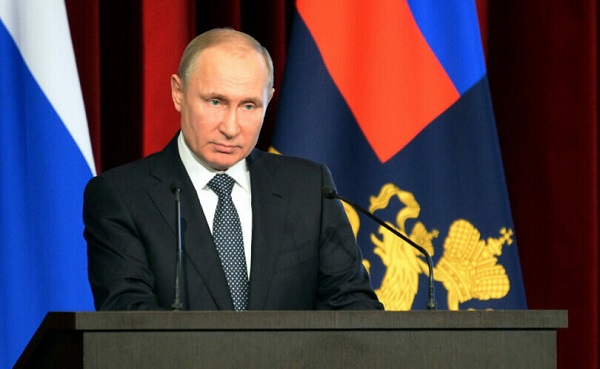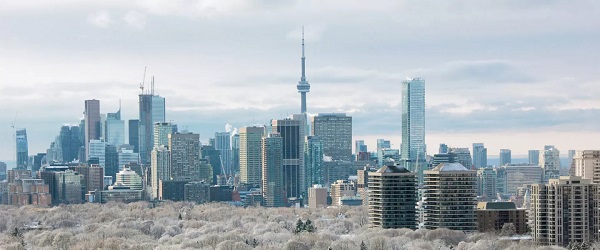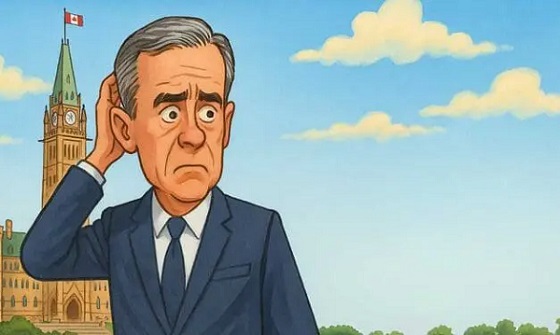Uncategorized
Trudeau not doing the little things to make life affordable

From the Canadian Taxpayers Federation
Author: Franco Terrazzano
Figuring out how to make life more affordable for Canadians shouldn’t be like unravelling Einstein’s theory of relativity.
If Prime Minister Justin Trudeau won’t do the big things to make life more affordable, he could at least do the little things.
“We know Canadians are facing challenging times right now, people are squeezed between the cost of groceries, rents,” Trudeau said during a cabinet retreat in Montreal aimed at “bringing down the cost of living.”
Trudeau knows “people are squeezed” because his tax hikes are some of the things that are doing the squeezing.
Take the carbon tax. Trudeau may never scrap his carbon tax, but he could at least not raise it again on April 1.
Even after the rebates, average families will be out hundreds of dollars this year because of the higher heating bills, gas prices, inflation and the economic damage wrought by the carbon tax, according to the Parliamentary Budget Officer.
Governments of all political stripes have paused fuel taxes to provide relief.
British Columbia’s New Democrats delayed their carbon tax hike during the pandemic. Manitoba’s NDP government suspended its fuel tax. Newfoundland and Labrador’s Liberals are also providing fuel tax relief, and so have the Conservative governments in Alberta and Ontario.
The United Kingdom, Sweden, Australia, South Korea, the Netherlands, Germany, Norway, India, Ireland, Israel, Italy, New Zealand and Portugal also provided fuel tax relief.
To add insult to injury: the feds charge their sales tax on top of the carbon tax. That’s right. The federal government applies its sales tax after all the per-litre taxes are added.
This tax-on-tax is costing Canadians about $500 million this year, according to the PBO. By the end of 2030, the GST on the carbon tax alone will have cost Canadians $6.2 billion.
Ending the tax-on-tax is a simple way to save Canadians billions when fuelling up or heating their homes.
Trudeau knows taxes make it more expensive to stay warm during the winter. Otherwise, why would he have taken the carbon tax off home heating oil for three years?
That political ploy was an attempt to help Atlantic Canadians amid tanking poll numbers in this typical Liberal stronghold.
But 97 per cent of Canadian families use other forms of energy to heat their homes. Trudeau should extend the relief he provided to Atlantic Canadians to everyone by taking the carbon tax off all forms of home heating. That would save the average family using natural gas about $1,100 over three years.
Trudeau can also give farmers relief and ease grocery prices by making sure the original Bill C-234 becomes law this year, which would remove the carbon tax from the natural gas and propane used on farms.
The House of Commons already passed this relief twice, but it still isn’t law because of shenanigans in the Senate.
The carbon tax on natural gas and propane that’s used to heat barns and dry grain will cost farmers $1 billion by 2030, according to the PBO.
By making it more expensive for farmers to grow food, the carbon tax makes it more expensive for Canadians to buy food.
There’s one more easy way for Trudeau to provide relief: stop his upcoming 4.7 per cent alcohol tax hike.
Last year, the feds capped the annual increase at two per cent. Trudeau shouldn’t have hiked the tax at all, but the smaller increase reduced the tax burden by $100 million. At a time when both consumers and businesses are struggling, freezing the alcohol tax is the least Trudeau could do.
The Trudeau government doesn’t need an expensive get-away in Montreal to figure out how to make life more affordable. There’s a simple solution: stop taking so much money from Canadians.
Uncategorized
Cost of bureaucracy balloons 80 per cent in 10 years: Public Accounts

The cost of the bureaucracy increased by $6 billion last year, according to newly released numbers in Public Accounts disclosures. The Canadian Taxpayers Federation is calling on Prime Minister Mark Carney to immediately shrink the bureaucracy.
“The Public Accounts show the cost of the federal bureaucracy is out of control,” said Franco Terrazzano, CTF Federal Director. “Tinkering around the edges won’t cut it, Carney needs to take urgent action to shrink the bloated federal bureaucracy.”
The federal bureaucracy cost taxpayers $71.4 billion in 2024-25, according to the Public Accounts. The cost of the federal bureaucracy increased by $6 billion, or more than nine per cent, over the last year.
The federal bureaucracy cost taxpayers $39.6 billion in 2015-16, according to the Public Accounts. That means the cost of the federal bureaucracy increased 80 per cent over the last 10 years. The government added 99,000 extra bureaucrats between 2015-16 and 2024-25.
Half of Canadians say federal services have gotten worse since 2016, despite the massive increase in the federal bureaucracy, according to a Leger poll.
Not only has the size of the bureaucracy increased, the cost of consultants, contractors and outsourcing has increased as well. The government spent $23.1 billion on “professional and special services” last year, according to the Public Accounts. That’s an 11 per cent increase over the previous year. The government’s spending on professional and special services more than doubled since 2015-16.
“Taxpayers should not be paying way more for in-house government bureaucrats and way more for outside help,” Terrazzano said. “Mere promises to find minor savings in the federal bureaucracy won’t fix Canada’s finances.
“Taxpayers need Carney to take urgent action and significantly cut the number of bureaucrats now.”
Table: Cost of bureaucracy and professional and special services, Public Accounts
| Year | Bureaucracy | Professional and special services |
|
$71,369,677,000 |
$23,145,218,000 |
|
|
$65,326,643,000 |
$20,771,477,000 |
|
|
$56,467,851,000 |
$18,591,373,000 |
|
|
$60,676,243,000 |
$17,511,078,000 |
|
|
$52,984,272,000 |
$14,720,455,000 |
|
|
$46,349,166,000 |
$13,334,341,000 |
|
|
$46,131,628,000 |
$12,940,395,000 |
|
|
$45,262,821,000 |
$12,950,619,000 |
|
|
$38,909,594,000 |
$11,910,257,000 |
|
|
$39,616,656,000 |
$11,082,974,000 |
Uncategorized
Trump Admin Establishing Council To Make Buildings Beautiful Again


From the Daily Caller News Foundation
By Jason Hopkins
The Trump administration is creating a first-of-its-kind task force aimed at ushering in a new “Golden Age” of beautiful infrastructure across the U.S.
The Department of Transportation (DOT) will announce the establishment of the Beautifying Transportation Infrastructure Council (BTIC) on Thursday, the Daily Caller News Foundation exclusively learned. The BTIC seeks to advise Transportation Secretary Sean Duffy on design and policy ideas for key infrastructure projects, including highways, bridges and transit hubs.
“What happened to our country’s proud tradition of building great, big, beautiful things?” Duffy said in a statement shared with the DCNF. “It’s time the design for America’s latest infrastructure projects reflects our nation’s strength, pride, and promise.”
“We’re engaging the best and brightest minds in architectural design and engineering to make beautiful structures that move you and bring about a new Golden Age of Transportation,” Duffy continued.
Mini scoop – here is the DOT’s rollout of its Beautifying Transportation Infrastructure Council, which will be tasked with making our buildings beautiful again. pic.twitter.com/
9iV2xSxdJM — Jason Hopkins (@jasonhopkinsdc) October 23, 2025
The DOT is encouraging nominations of the country’s best architects, urban planners, artists and others to serve on the council, according to the department. While ensuring that efficiency and safety remain a top priority, the BTIC will provide guidance on projects that “enhance” public areas and develop aesthetic performance metrics.
The new council aligns with an executive order signed by President Donald Trump in August 2025 regarding infrastructure. The “Making Federal Architecture Beautiful Again” order calls for federal public buildings in the country to “respect regional architectural heritage” and aims to prevent federal construction projects from using modernist and brutalist architecture styles, instead returning to a classical style.
“The Founders, in line with great societies before them, attached great importance to Federal civic architecture,” Trump’s order stated. “They wanted America’s public buildings to inspire the American people and encourage civic virtue.”
“President George Washington and Secretary of State Thomas Jefferson consciously modeled the most important buildings in Washington, D.C., on the classical architecture of ancient Athens and Rome,” the order continued. “Because of their proven ability to meet these requirements, classical and traditional architecture are preferred modes of architectural design.”
The DOT invested millions in major infrastructure projects since Trump’s return to the White House. Duffy announced in August a $43 million transformation initiative of the New York Penn Station in New York City and in September unveiledmajor progress in the rehabilitation and modernization of Washington Union Station in Washington, D.C.
The BTIC will comprise up to 11 members who will serve two-year terms, with the chance to be reappointed, according to the DOT. The task force will meet biannually. The deadline for nominations will end Nov. 21.
-

 Business1 day ago
Business1 day agoWhy Does Canada “Lead” the World in Funding Racist Indoctrination?
-

 Automotive2 days ago
Automotive2 days agoTrump Deals Biden’s EV Dreams A Death Blow
-

 Media1 day ago
Media1 day agoThey know they are lying, we know they are lying and they know we know but the lies continue
-

 Focal Points1 day ago
Focal Points1 day agoThe West Needs Bogeymen (Especially Russia)
-

 Automotive2 days ago
Automotive2 days agoCanada’s EV Mandate Is Running On Empty
-

 Censorship Industrial Complex23 hours ago
Censorship Industrial Complex23 hours agoUS Condemns EU Censorship Pressure, Defends X
-

 Banks1 day ago
Banks1 day agoTo increase competition in Canadian banking, mandate and mindset of bank regulators must change
-

 Health3 hours ago
Health3 hours agoCDC Vaccine Panel Votes to End Universal Hep B Vaccine for Newborns










